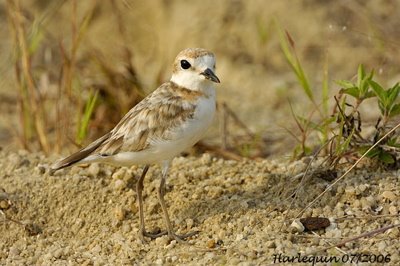Philip Tang, an avid nature photographer, spent two years stalking the Malaysian Plover (Charadrius peronii), also known as Malaysian/Malayan Sandplover. He has successfully documented the birds’ breeding behaviour and is sharing his images and observations that will be posted here during the next few days.
“The Malaysian Plover is a smallish coastal bird that is found exclusively on sandy beaches and coastal sand-fill in Singapore. Although designated a rare resident locally, it is not globally threatened but near-threatened. The population worldwide has been estimated to be less than 10,000 birds, this number probably declining with the years.
“Plovers are small wading birds that are widely distributed throughout the world. They belong to the Family Charadriidae that comprises three Subfamilies: Charadriinae or plovers (41 spp.), Vanellinae or lapwings (25 spp.) and Pluvianellinae or Magellanic Plover (1 sp.).
“These birds are characterised by their relatively short bill. They feed in pairs on remote sandy beaches, hunting by sight rather than by feel as longer-billed waders like snipe do. They feed on worms, especially polychaetes and other invertebrates like small crustaceans, shrimps, amphipods and isopods. They have a typical run-and-pause technique of hunting, rather than the steady probing of some other wader groups. The birds wait for prey to reveal itself, then run towards it. They then wait quietly for another opportunity. If no more prey is detected, they move on to a new site.
“The plumage of brown, grey, black and white provides excellent camouflage for the birds in the uniform sandy shore they congregate. The sexes lack size dimorphism but show plumage differences. The male is easily recognized from the thin black band round its neck while the female has a rufous brown band.
Input and images (top, male; bottom, female) by Philip Tang.










